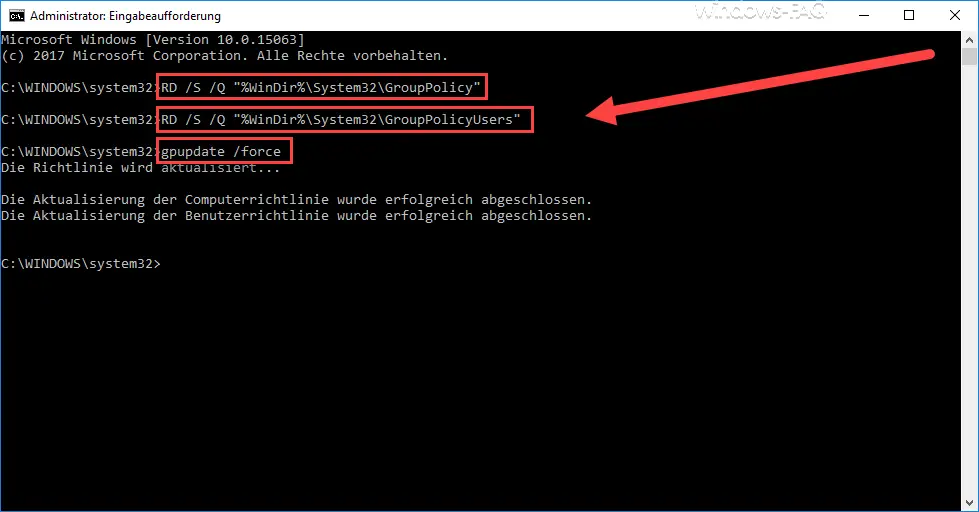In the past, we discussed how you can completely reset local group policies to their original state . However, this was a manual effort , which was a bit cumbersome depending on the amount of GPOs set. You can find the appropriate contribution to this under the link ” Reset local group guidelines completely “.
Today we want to show you that with 2 commands you can achieve the same thing. To do this, you first have to open an MS-DOS command prompt that has administrator rights.
Then the following commands must be issued one after the other.
RD / S / Q “% WinDir% System32 GroupPolicy”
and
RD / S / Q “% WinDir% System32 GroupPolicyUsers”
We have shown you the entire reset process for the group guidelines below.

These two commands do nothing but delete all files and information from the ” GroupPolicy ” and ” GroupPolicyUsers ” folders from the Windows System32 folder and thus reset the set group policies to their default value ” Not configured “.
It is important that you still enter one after issuing these two delete commands
gpupdate / force
so that the reset computer policies and user policies are also applied and that you can see the corresponding changed settings in the local Group Policy Editor.
Note: You can easily understand and try this out by simply setting any group policy on a test system, then issuing the 3 commands and then checking the previously set GPO in the group policy editor. You will see that it has been reset accordingly. Before you do this on a real system, we would definitely recommend that you test this process. We do not guarantee that data will be lost .
If you are interested in other interesting group guidelines, we recommend the following articles here on Windows FAQ.
– Hide or remove pages and options from the Windows 10 Settings app
– Remove CD / DVD burning function from Windows Explorer
– Do not display the trash symbol on the desktop
– Thumbs.DB – Deactivate the image thumbnails in Windows Explorer
– Windows power options for the screen and set standby mode via GPO
– Automatically delete inactive user profiles after a certain number of days
– Delete Windows swap file by security policy on shutdown
– Restrict rights to add Windows clients to the domain
– Only allow local user profiles
– Deactivate animation when Windows 10 is logged on for the first time
